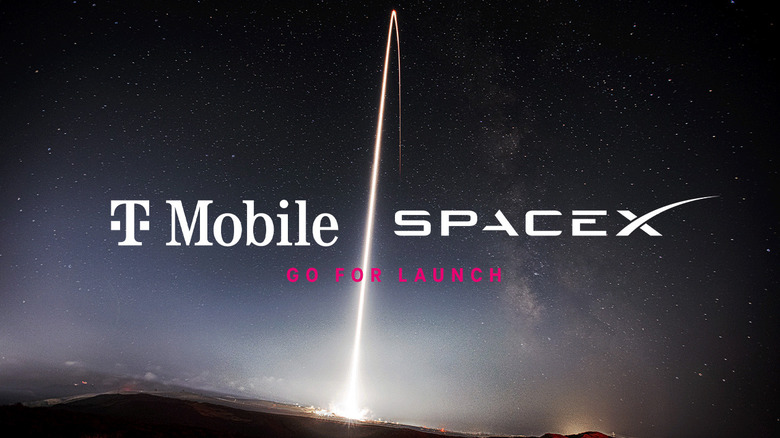Starlink Launches First Satellites For Cell Service: Here's What To Expect
On Wednesday, Elon Musk's SpaceX announced that it has launched new Starlink satellites into orbit as part of a partnership with T-Mobile to provide cellular phone service in what had previously been dead zones. As promising as the technology is, though, Musk is uncharacteristically humble about its current limitations.
"This will allow for mobile phone connectivity anywhere on Earth," he wrote in a post on X, formally known as Twitter. "Note, this only supports ~7Mb per beam and the beams are very big, so while this is a great solution for locations with no cellular connectivity, it is not meaningfully competitive with existing terrestrial cellular networks."
T-Mobile and SpaceX first announced the partnership in August 2022, dubbing it "Coverage Above and Beyond." As T-Mobile noted in a press release, significant portions of the United States severely lack cellular service coverage, citing areas with land-use restrictions, such as national parks and land not conducive to cell towers, like mountains and deserts.
According to a T-Mobile press release published on Wednesday, Starlink's Direct to Cell coverage will initially just cover text messaging, with voice and data service "to follow in the coming years." The Starlink Direct to Cell website, more specifically, pegs text messaging coverage as "starting 2024" while it lists voice, data, and Internet of things coverage as "starting 2025."
Additional details
The Starlink Direct to Cell website further adds that the new, satellite-based cell towers function as generic LTE towers and are compatible with existing LTE-capable phones "wherever you can see the sky." The copy on the site explains that Direct to Cell functions "similar[ly] to a standard roaming partner," the same way that T-Mobile falls back to an alternate partner carried when you fall outside of T-Mobile's service area while still within the partner carrier's footprint.
In addition to T-Mobile in the U.S., Starlink Direct to Cell partners so far include Optus in Australia, Rogers in Canada, One NZ in New Zealand, KDDI in Japan, Salt in Switzerland, and Entel in Chile. The press release, though, notes that, so far, only KDDI, Optus, One NZ, and Rogers are live and functional.
"One of the great advantages of this proposal is that it will work using the same 4G VoLTE phones that exist in the market today. It does not require any special equipment or special software," Entel network manager Luis Uribe told BNamericas last week, shortly after the Chilean deal was announced. "This is an important advantage over traditional satellite solutions." That's a notable difference from Apple's Emergency SOS feature for satellite access, which requires an iPhone 14 or later. As with the initial implementation of Starlink Direct to Cell, iPhone Emergency SOS is limited to short, text-based messages to make the most of limited bandwidth.

